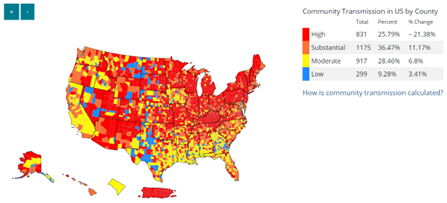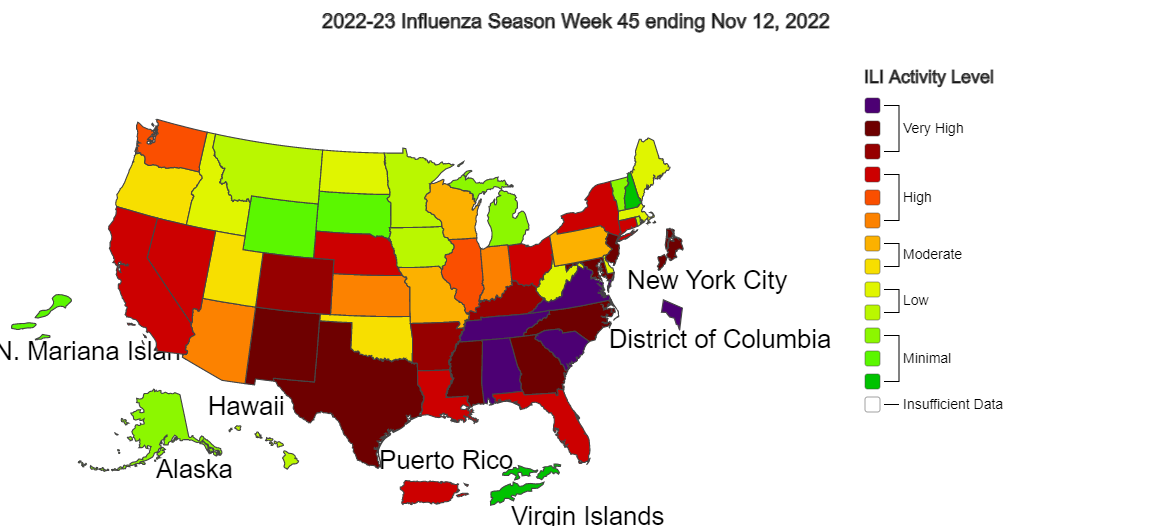It is hard to believe that we’re already in November and celebrating Lung Cancer Awareness Month! In addition to recognizing LCAM, fall is also a good time to remind people, especially those with compromised lungs, to take action to protect their lung health.
Fall 2022 is already shaping up to be a challenging season, with several respiratory viruses circulating at the same time. Of course, COVID-19 remains with us, and we’ll soon be entering our fourth year of pandemic life. You may have also seen news reports that flu activity is off to an early and strong start. Additionally, respiratory syncytial virus (RSV), a virus that is particularly dangerous for infants and the elderly, has been surging nationwide.

With the relaxation of masking and social distancing practices, experts have been predicting that high levels of multiple respiratory viruses are likely to circulate at the same time. But what does this mean for patients with lung cancer? I wanted to take a moment to update you on some recent developments for each of these three viruses.
COVID-19
Yes, the pandemic is still here. Though much of the US has enjoyed a slight reprieve from the levels we saw last winter, much of the country is still in areas of high transmission, as demonstrated in the red areas on the map below, and the virus continues to kill between 300-400 people a day. With winter approaching, this means we must not let our guard down. Things you can do to protect yourself and your loved ones going into the winter months include wearing masks in indoor settings, practicing social distancing, and making sure you are current on your COVID-19 vaccines. The updated bivalent booster is now approved for all people ages 5 and up here in the US.

Scientists are closely monitoring new variants of the virus that causes COVID-19, commonly called the “Scrabble” variants because they contain letters that commonly are of high value in Scrabble, like B and X. These variants now cause the majority of new infections in the US. The reason they are of concern is because they are the most immune evasive variants to date, meaning drugs like Evusheld (to prevent infection in high-risk people) and some of our monoclonal antibody treatments no longer work against them. However, the updated vaccines are effective against the Scrabble variants.
We are also keeping an eye on Europe, where there has been a recent surge in cases. Throughout the pandemic, the situation in Europe has been somewhat of a bellwether for what will happen in the US.
For now, your greatest protection against COVID-19 is to stay current on your vaccines.
Flu
After 2 relatively quiet seasons during the height of the pandemic, the flu is back with a vengeance, getting off to an early start in much of the country, particularly the South and Northeast. The measures we took to try to halt COVID-19 (masking, social distancing) were particularly effective at driving down cases of the flu over the past two years, basically eliminating any flu activity in 2020. However, with the relaxation of these protective measures, the flu is once again making a comeback. The below map shows flu activity for the week ending November 12, 2022. You will note that several states are shaded in dark purple, which I do not recall ever seeing on these weekly maps before.

In data released last week, the CDC reports more flu hospitalizations at this point in the season than in the past decade. Given the relative lack of flu activity the past two years, people’s immune systems may not be as prepared to fight the virus. Indeed, there have been numerous reports in the news of large outbreaks in school settings nationwide, with a strain called H3N2 being the dominant one. This strain often causes more complications in the very young, the elderly, and those with compromised immune systems, which includes patients with cancer. The good news is that this year’s flu shot is a good match for circulating flu strains.
If you have not already gotten your flu shot this season, now is the time to do so! The flu shot is safe and recommended for all patients with active cancer as well as cancer survivors. For added convenience, you can also get your updated COVID booster at the same time you get your flu shot!
RSV
You may be less familiar with a virus called respiratory syncytial virus, or RSV. This is another respiratory virus that typically infects everyone by age 2. Yet, RSV can be particularly severe for infants and toddlers as well as the elderly or those with compromised immune systems. RSV can settle deeper in the lungs, causing them to fill with mucus, making breathing difficult. Similar to what we observed with the flu, RSV levels were low the past two years because of masking and social distancing. Now, however, the virus is back with a vengeance, taxing pediatric hospitals nationwide.
Unlike for COVID-19 and the flu, there is no vaccine for RSV. There is an antibody treatment given to premature infants and babies under the age of 24 months, to protect their developing lungs from RSV.
It is vitally important that people know the signs and symptoms of RSV and take appropriate action if their child shows signs of breathing difficulty.
Given the lack of a currently available vaccine for RSV, it is important to practice prevention measures like masking, using good sneezing/coughing hygiene, handwashing, not sharing cups/utensils, cleaning surfaces, and not kissing babies while RSV activity is high.
Indeed, the 2022-2023 respiratory virus season is shaping up to be challenging, with high activity across COVID-19, flu, and RSV. Thankfully, we have effective vaccines against the first two, and the measures we took in the early days of the pandemic (masking, social distancing, handwashing) go a long way to keep you safe and to limit virus spread. Please make sure you are current on your COVID-19 and flu shots and take these other easy steps to protect you, your loved ones, and your community.
Wishing you a safe and healthy fall season!
